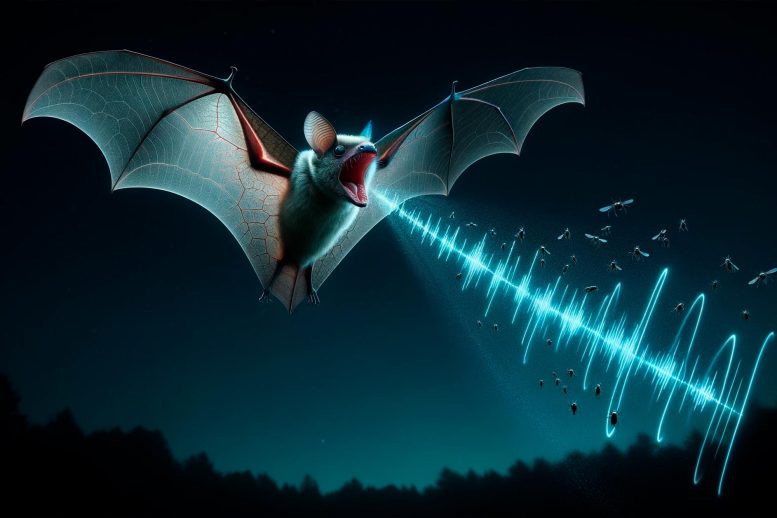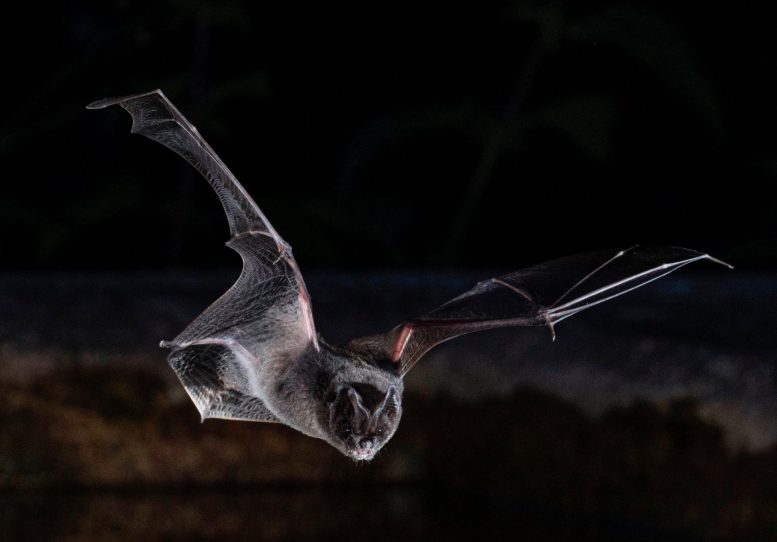
Researchers challenge the idea of an arms race between bats and insects, suggesting that the barbastelle bat’s quiet calls are inherited from quieter gleaner ancestors, not as a direct adaptation against insect hearing.
The barbastelle bat’s quiet calls may be a result of ancestry, not an insect-evading adaptation.
Ask a biologist why predators don’t exterminate all their prey, part of the answer often is that there is an ongoing arms race between predators and prey, with both parties continuously evolving new ways to cheat each other.
The hypothesis is particularly prevalent for bats and their prey; insects. 50 million years ago, the first bats evolved the ability to echolocate and thus hunt in the dark, and in response to this, some insects evolved ultrasound-sensitive ears so they could hear and evade the bats.
Challenging the Arms Race Hypothesis
However, if there is an ongoing arms race, bats should have responded to this, says University of Southern Denmark biologist, associate professor Lasse Jakobsen. He is a bat expert and co-author of a new study published in Current Biology. In the study, he and colleagues question the evolutionary arms race between bats and insects.
The other authors are Daniel Lewanzik and Holger R. Goerlitz from the Max Planck Institute for Biological Intelligence and John M. Ratcliffe and Erik Etzler from the University of Toronto.

A barbastelle bat flying in the dark. Credit: Sherri and Brock Fenton
The main argument supporting the arms race hypothesis is that some bats do not call as loudly as others when hunting, and thus cannot be heard as easily by the insects. These are the barbastelles (Barbastella barbastellus), and they are approx. 20 dB quieter than other bats that hunt flying insects, which means that the sound pressure they emit is 10 times lower.
“The barbastelle is traditionally highlighted as the bat that has “struck back” at the insects,” says Lasse Jakobsen.
Evolutionary History of the Barbastelle
However, something puzzled him and his colleagues: If you look at the barbastelle’s close relatives, there are virtually no other members catching insects in the air. Instead, they eat insects that sit on surfaces such as leaves and branches, and those species are all quieter than the species that hunt flying insects.
In bat research circles, the bats that catch insects in the air are called hawking bats, while the bats that pick insects from a surface, so to speak, are called gleaning bats. The barbastelle is a hawking bat.
A barbastelle bat is catching an insect in the air at night. Credit: Lasse Jakobsen, University of Southern Denmark
“If most of the barbastelle’s family are gleaners, then their ancestor was very likely also a gleaner,” says Lasse Jakobsen.
Accordingly, it is therefore unlikely that the ancestor of the barbastelle was a loud hawker that evolved into the whispering barbastelle as a response to insect hearing.
“A species does not have free choice when it evolves in a new direction. For example, it is a condition for mammals that their ancestor did not have feathers, so their descendants will never evolve a wing with feathers. Instead, they have found another solution for flying: modified skin between the fingers,” explains Lasse Jakobsen.
The Real Reason Behind the Barbastelle’s Quietness
However, if the barbastelle didn’t evolve its ability to be quieter when hunting in the air, as part of the arms race between insects and bats; where does it come from?
“It is not an evolved ability. It just cannot produce louder calls than it does, because as a descendant of a gleaner it is probably morphologically limited. But it has found a niche, where it can use its low amplitude calls. It is an evolutionary coincidence; it sort of fell into this niche, where there was something to eat.”
This niche is populated by flying, nocturnal insects that can hear and are thus good at avoiding nocturnal bats. But they cannot hear well enough to register the barbastelle, so they end up as their prey.
The reason for the morphological limitation must be found in how bats emit their sound. Most bats call out of their mouths, and this allows them to emit loud sounds. Many gleaners, on the other hand, emit sound with their noses, and this makes their calls 20 dB lower.
“So, the reason why the barbastelles are so quiet today is not an expression of an arms race between bats and insects, but rather simply an expression of the fact that it is descended from bats that cannot call as loudly as others,” says Lasse Jakobsen.
Nocturnal flying insects: Examples of nocturnal flying insects are moths, beetles, and mosquitoes. Many moths have ears and can hear if a bat is approaching. Until approx. 50 million years ago, when bats arose, nocturnal flying insects had no enemies of significance. Today, only bats hunt insects at night.
Reference: “Stealth echolocation in aerial hawking bats reflects a substrate gleaning ancestry” by Daniel Lewanzik, John M. Ratcliffe, Erik A. Etzler, Holger R. Goerlitz and Lasse Jakobsen, 27 October 2023, Current Biology.
DOI: 10.1016/j.cub.2023.10.014









Be the first to comment on "Stealth Echolocation: How Evolutionary Twists Made This Bat a Silent Assassin"